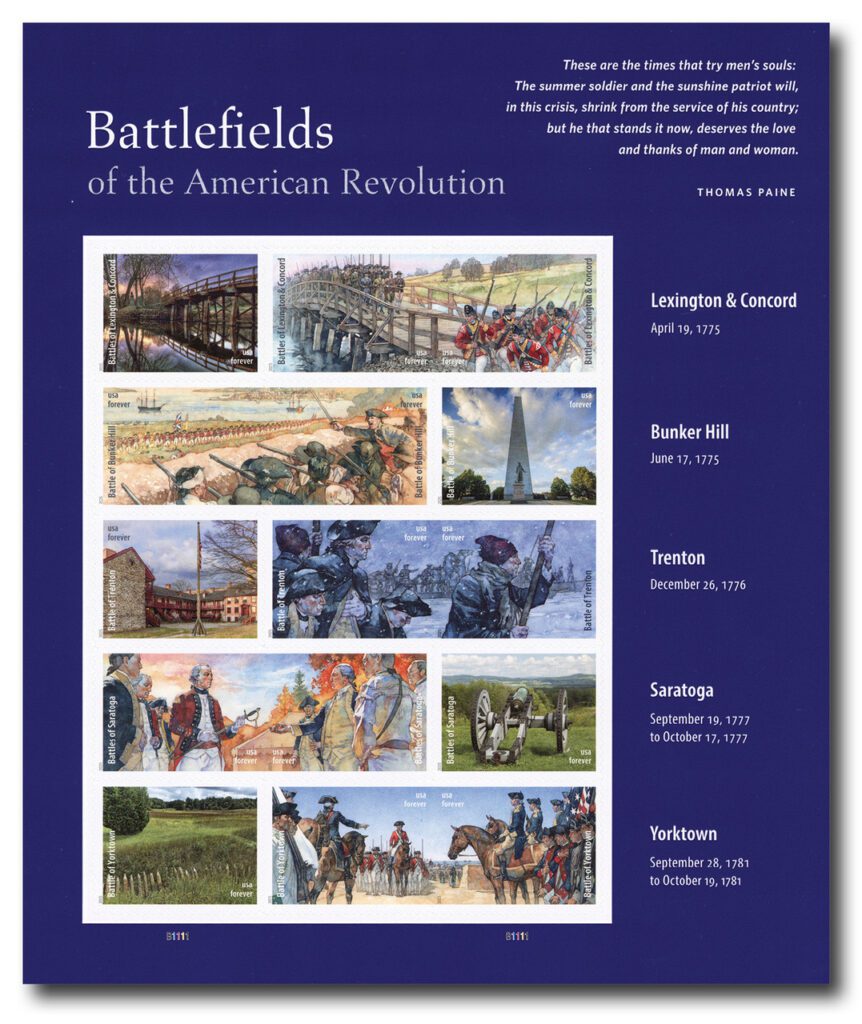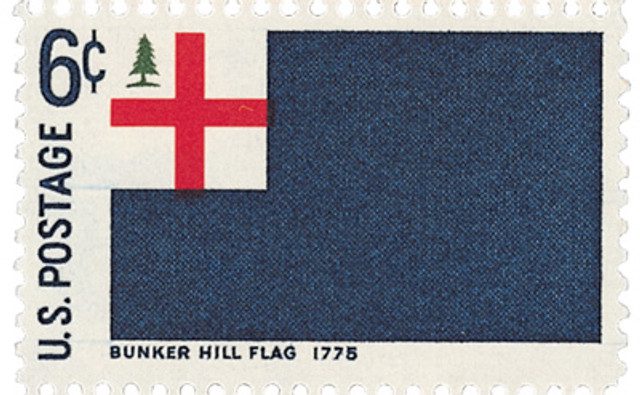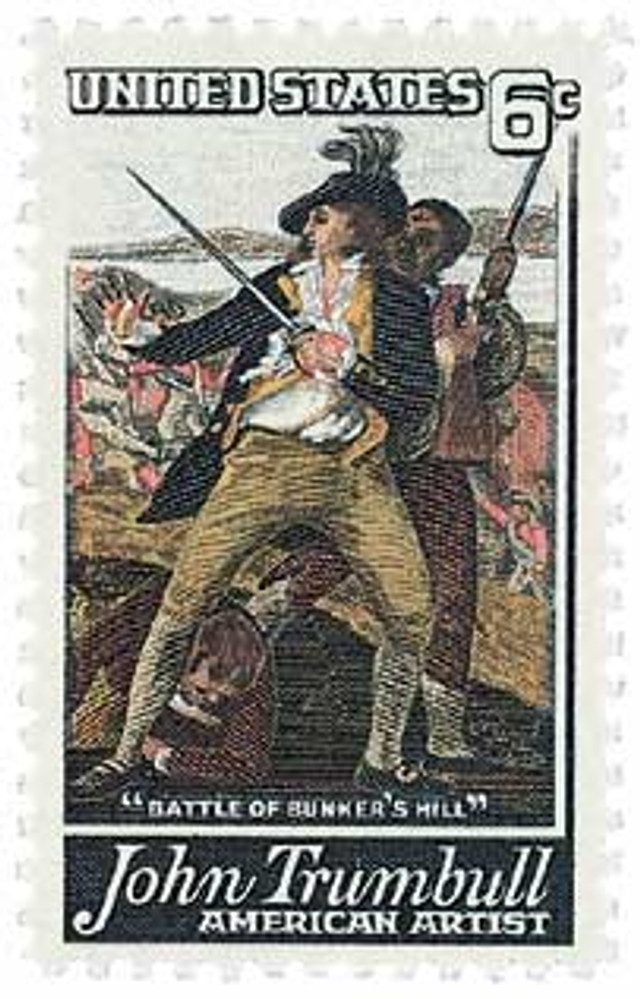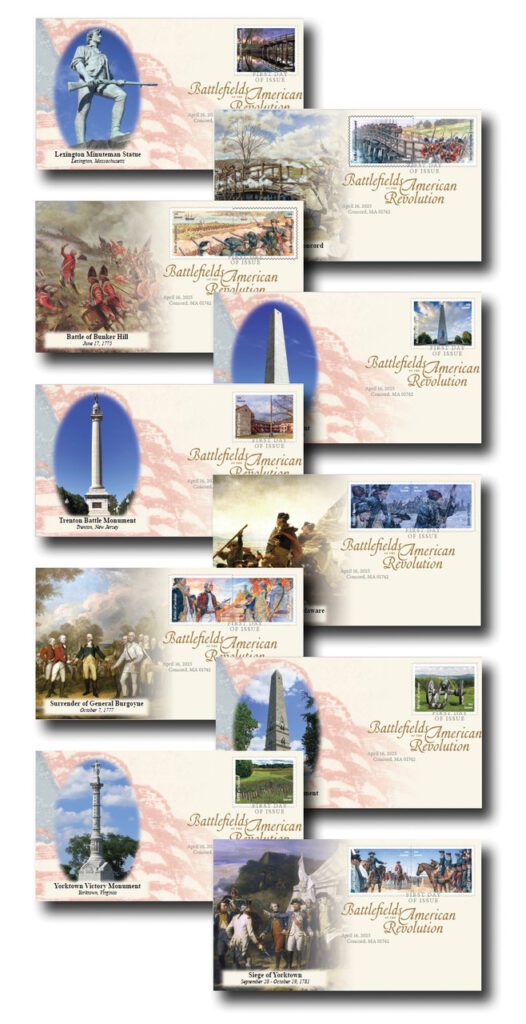On June 17, 1775, American colonists inflicted heavy British casualties in their loss at the Battle of Bunker Hill.
After the battles of Lexington and Concord, the American colonists sealed off access to Boston by land. Though the British Army still controlled the waterways, the officers were concerned the colonists would bombard the city from the surrounding hills. The British planned to attack the colonists to push them away from Boston.
The Massachusetts Provincial Congress received word that the British regulars were going to attack. The colonists decided to fortify Bunker Hill to protect the Charlestown Peninsula to the north of Boston. On the night of June 16, 1775, Colonel William Prescott led 1,200 men to the peninsula for preparations. After some discussion, Breed’s Hill was chosen for the defensive position because it was closer to Boston than Bunker Hill. They built a square fortification with 6-foot-high earthen walls.
When General Gage, commander of the British regulars, saw the fortifications the following morning, June 17, he decided to attack that day. It took almost six hours for the Red Coats to assemble, and several more hours to ferry them across the Charles River. By 3:00 p.m., they were finally ready to attack.

Meanwhile, the colonists continued to extend their defense down the sides of the hill using dirt, fence posts, and hay. Reinforcements arrived and filled in some of the gaps along the colonists’ line. Knowing they were short on ammunition, Colonel Stark, leader of the New Hampshire regiments, placed a stake about 100 feet from the fence and ordered his men not to shoot until the British passed the mark.
The Red Coats approached Breed’s Hill in long columns. When they were within range, the colonists fired on them and inflicted heavy casualties. The British retreated, regrouped, and attacked again with the same results.
After reinforcements arrived, the Red Coats made a third attempt to take the hill. The colonists were running low on ammunition, and retreated. The British gained control of Charlestown Peninsula but paid a terrible price: 226 were dead and 828 were wounded – nearly one third of the soldiers who participated in the battle.

Colonel Prescott proved an able leader of the colonial forces. Before the battle, he reportedly told his men, “Do not fire until you see the whites of their eyes.” Though his men were poorly trained and had little ammunition, they served as America’s central defense at the Battle of Bunker Hill.
Among the American casualties that day was General Joseph Warren. Pictured on US #1564, Warren was a Massachusetts doctor. He organized patriots in Boston at the outbreak of the war and served as president of the Massachusetts Provincial Congress. He also set Paul Revere out on his famous midnight ride and fought at Lexington and Concord. Though he was commissioned a Major General just days before the Battle of Bunker Hill, Warren chose instead to fight alongside his soldiers.

The Battle of Bunker Hill, which actually took place on Breed’s Hill, showed that the inexperienced colonial militias could stand up against the well-trained British. It increased support for independence from colonies that were previously undecided. This early battle of Revolutionary War gave the colonists the courage to continue in their fight for independence.
| FREE printable This Day in History album pages Download a PDF of today’s article. Get a binder or other supplies to create your This Day in History album. |
Discover what else happened on This Day in History.





T
I have a picture of the Bunker Hill Monument with my uncle John Frank as my father’s younger brother in the spring of 1958 or in the summer of 1958 that I went there when I was two years old with my family including my patenal grandparents.
I love your historic facts. Keep them coming. !!!
I had heard a number of times that General Israel Putnam had given the order “Do not fire until you see the whites of their eyes”. He was from northeastern Connecticut and there is a marker on scenic Route 169 at the Pomfret / Brooklyn town line that tells the story of how he left his plow in the field when he received word that the colonists were gathering to battle the British. There is a monument of him, on his horse, in the center of Brooklyn.
My 3rd great grandfather, Lt Stephen Hoyt fought in Capt Hale’s company of Col Stark’s 1st NH regiment at Bunker Hill. The British Fusiliers lost all but 38 of their 600 men attempting to overtake Stark’s left flank. The militia received most of their casualties during the retreat. They only received about twelve rounds per man and had to save two for the retreat. They would have been able to hold the British if they were re-enforced.
Wow your family history!!!!
Steven Hoyt Jr’s son John married Priscilla Brown, then after her death, married Elizabeth Weatherbee. My great great great grandfather Charles Hoyt, born in Orrington Maine, is found on a 1850 census record living with Cornelius and Hannah Brown, parents of deceased Priscilla, who died about a week after Charles was born. John Hoyt died at sea in Suwalesi Indonesia, after travelling to California not long after marrying Elizabeth to mine gold. There is a complete diary of his travel and letters to Elizabeth on Worldcat, an online document service that I had trouble accessing. I found the fact that Charles Hoyt might be living with his grandparents intriguing, since if they are, I would be descended from Steven Hoyt. I have never had any DNA test done, wondering if you have, is so I’d like to see if there is a match.
I too am a decendant of Stephen Hoyt. I represent Lt. Stephen Hoyt in the Society of the Cincinnati. Stephen Hoyt Sr. was lost returning from the raid on St. Francis as a member of Rogers Rangers. Stark also served with Rogers as a Ranger. It is my guess that at the time of the revolution, Stark made Stephen Hoyt Jr. a lieutenant in his Continental regiment because he knew his father Stephen Hoyt Sr. My decendants including Hoyts, all settled in the Bradford NH region. I visit his grave each time I am in Bradford.
We currently live in dangerous times again. What we need is a citizens militia in the Spirit of Bunker Hill, just as the Second Amendment commanded! Thanks, for this detailed history; I am living just northwest of Orlando.
Correction, I live in Maitland just northeast of Orlando; I spent most of my life in Orlando.
If the battle of Bunker Hill was fought upon the slopes of Breed’s Hill, upon which hill is the Bunker Hill Monument placed?
What has living in Orlando do with the battle of Bunker Hill. If for some reason you come from the North East where all this took place you would have a lot to say.
Fantastic history that ALSO includes details provided by the above. repliers about their family’s involvement in the Battle of Bunker Hill. I really enjoyed reading ALL of this essay info. Just keep it coming !!
When I was an intern at the Cambridge City Hospital in 1959 our living quarters were on the third floor of the hospital. I had a very nice single room. However, one day I was told to move to a double room so that a more senior gent could have my room. I was not very happy. But, the double room which I moved to had a single window and when I looked out of the window I could see the Bunker Hill monument which looked like a framed picture to me.